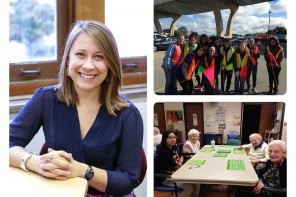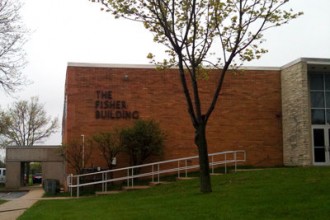By Lisa Plichta — Summer drew to a close with the passing of Labor Day weekend. And, as we physically or electronically advanced our calendars to the month of September, a majority of school-age children started their 2014-15 school year.
This year, I began my 23rd year as a professional educator; but, every first “official” day of school, I still get a few butterflies of excitement about the year to begin. In talking with an even more veteran colleague this past week, he identified with my butterflies: “My wife told me she could tell I was still excited about working with students. I have a spring in my step.” Together, we also reflected that when the butterflies disappeared, it would be a sign that it was time to move on and try something different.
So what about the “butterflies of excitement” for our students?
They all have butterflies in some way – some may be experiencing the excitement of going to school for the first time, taking their first official bus ride, or going to a new school. The intensity of the fluttering has quite a range – a gentle fluttering around meeting the teacher or seeing who is in their class while others may experience nervously rapid beating wings as they hope to just fit in, figure out how to recall a locker combination in 4 minutes, or meet the academic expectations placed upon them by teachers, parents, or even themselves.
From just watching our students enter the classroom, we don’t know what form of butterflies our students have about beginning the school year. It’s why we plan many getting-to-know-you, ice-breaker, and community building activities in the first weeks of school. As a result, we get to know our students’ interests and needs as well as soften the rapid beating of nervous wings in many of our students. Much planning goes into making those first days and weeks of school supportive and inviting for children. Once those butterflies settle as students feel welcomed into their school and classroom, they can begin to spread their wings as they explore new concepts, skills, and challenges. That excitement and enthusiasm for learning is what we hope to instill in all our students. Thank you to all the educators who help children develop into adults who feel confident enough to believe they can achieve their dreams and soar to new heights.
_______________________________________
 Lisa Plichta is presently an Assistant Professor at Cardinal Stritch University serving in the Undergraduate Teacher Education and Master of Arts in Teaching programs. She teaches advanced methods courses which involve lesson planning, unit planning, assessment, and field work. Lisa also serves as PDP reviewer for Stritch graduates who are working on their Professional Development Plans for licensure renewal.
Lisa Plichta is presently an Assistant Professor at Cardinal Stritch University serving in the Undergraduate Teacher Education and Master of Arts in Teaching programs. She teaches advanced methods courses which involve lesson planning, unit planning, assessment, and field work. Lisa also serves as PDP reviewer for Stritch graduates who are working on their Professional Development Plans for licensure renewal.


 i evaluate to yes even if there's no image
i evaluate to yes even if there's no image  i evaluate to yes even if there's no image
i evaluate to yes even if there's no image  i evaluate to yes even if there's no image
i evaluate to yes even if there's no image 